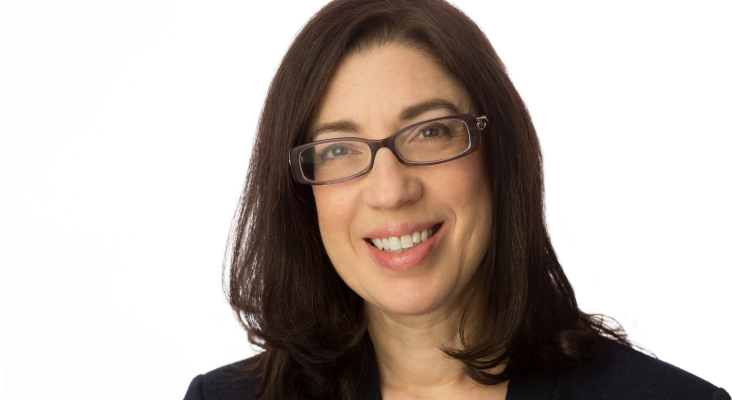 Can one individual or organization cover my complete spectrum of financial concerns, including investment diversification and maximum returns, income tax optimization, required minimum distribution (RMD) management, and steady income cash flow? Is there a good way to survey fiduciary candidates and compare expertise, performance and costs?
Can one individual or organization cover my complete spectrum of financial concerns, including investment diversification and maximum returns, income tax optimization, required minimum distribution (RMD) management, and steady income cash flow? Is there a good way to survey fiduciary candidates and compare expertise, performance and costs?
-Bill
Navigating your finances can be tricky, and enlisting a professional can help you make the most of your money.
Choosing a financial professional, however, can feel overwhelming. There are several different types of financial advisors, and they all bring different skills and experience to the table. Wading through your options to pick an advisor or team of advisors takes a little due diligence. But having reliable, proactive pros on your side will be worth it. (This tool can help match you with potential advisors so you can decide which one is right for you.)
Can One Advisor or Firm Do It All?
 While one advisor usually won’t have expertise in every aspect of personal finance, there are umbrella firms that combine professionals for a sort of one-stop shop. Within these firms, you can find attorneys, tax preparers, investment advisors and financial planners, so your team will be under one company’s roof.
While one advisor usually won’t have expertise in every aspect of personal finance, there are umbrella firms that combine professionals for a sort of one-stop shop. Within these firms, you can find attorneys, tax preparers, investment advisors and financial planners, so your team will be under one company’s roof.
If you don’t feel comfortable having all your advisors in one basket, you can assemble your own team based on your specific needs. For example, an investment advisor can help you preserve and grow your wealth while a certified public accountant (CPA) can help determine your RMD requirements, do tax planning and outline potential tax consequences of financial moves.
A Certified Financial Planner™ (CFP®) can help you develop your retirement budget, so you know how much you do or don’t need to pull from retirement accounts. And an estate planning attorney will help you create a will, prepare financial and medical powers of attorney, and make sure your heirs will be protected after you’re gone.
Whether you work with a single firm or several independent advisors, it’s important to make sure that everyone is on the same page about your situation, goals and risk tolerance. Your advisors can coordinate – with your permission – to make sure every transaction is done in the most beneficial way. (Are you also on the hunt for a new financial advisor? (This tool can help match you with potential advisors so you can decide which one is right for you.)
Different Types of Financial Advisors
The term “financial advisor” is used to describe many different positions in the financial industry. But recent regulation from the U.S. Securities and Exchange Commission (SEC), called Regulation Best Interest (Reg BI), has limited who can use the title. Financial advisors generally are also registered investment advisors (RIAs) or investment advisor representatives.
Financial advisor here often means investment advisor or investment manager, someone who helps you invest and grow your wealth. These advisors may also be able to offer other types of services, but not always. Professional designations will be more informative as you begin to look for an advisor, as they give you information about education, experience and expertise. (Looking for a financial advisor? (This tool can help match you with potential advisors so you can decide which one is right for you)
Equally important, you want to make sure you work only with fiduciaries. Fiduciaries are legally required to put clients’ interests ahead of their own. Non-fiduciary advisors don’t have to hold that standard, meaning they can advise you in ways that benefit themselves first and you second, if at all. That’s not to say that all non-fiduciary advisors will act in that manner, just that they can.
Professionals Who Make Up a Financial A-Team
 Let’s look at different types of financial advisors and how they can best help you based on their core specialty. (This tool can help match you with potential advisors so you can decide which one is right for you.)
Let’s look at different types of financial advisors and how they can best help you based on their core specialty. (This tool can help match you with potential advisors so you can decide which one is right for you.)
Investment advisors: These professionals analyze securities, offer advice, make recommendations and execute trades. They must be registered with the SEC or with their state authority. These advisors can increase and preserve your wealth and help make sure you can fund your retirement.
Certified Financial Planners™ (CFPs®): These financial professionals help with things like debt management, creating budgets and planning for retirement. CFPs® must pass grueling certification exams to earn the designation. These advisors can help you make the most of your retirement income and optimize your cash flow.
Certified Public Accountants (CPAs): These tax professionals may assist with tax planning and tax return preparation. They must meet education and experience requirements and pass a series of exams to get licensed. These advisors can help you minimize the tax burden of retirement withdrawals, including using specialized strategies to avoid taxation of required minimum distributions (RMDs) when possible.
Make sure you’re taking the right amount by starting your own RMD calculation:
Required Minimum Distribution (RMD) Calculator
Estimate your next RMD using your age, balance and expected returns.
RMD Amount for IRA(s)
RMD Amount for 401(k) #1
RMD Amount for 401(k) #2
About This Calculator
This calculator estimates RMDs by dividing the user's prior year's Dec. 31 account balance by the IRS Distribution Period based on their age. Users can enter their birth year, prior-year balances and an expected annual return to estimate the timing and amount of future RMDs.
For IRAs (excluding Roth IRAs), users may combine balances and take the total RMD from one or more accounts. For 401(k)s and similar workplace plans*, RMDs must be calculated and taken separately from each account, so balances should be entered individually.
*The IRS allows those with multiple 403(b) accounts to aggregate their balances and split their RMDs across these accounts.
Assumptions
This calculator assumes users have an RMD age of either 73 or 75. Users born between 1951 and 1959 are required to take their first RMD by April 1 of the year following their 73rd birthday. Users born in 1960 and later must take their first RMD by April 1 of the year following their 75th birthday.
This calculator uses the IRS Uniform Lifetime Table to estimate RMDs. This table generally applies to account owners age 73 or older whose spouse is either less than 10 years younger or not their sole primary beneficiary.
However, if a user's spouse is more than 10 years younger and is their sole primary beneficiary, the IRS Joint and Last Survivor Expectancy Table must be used instead. Likewise, if the user is the beneficiary of an inherited IRA or retirement account, RMDs must be calculated using the IRS Single Life Expectancy Table. In these cases, users will need to calculate their RMD manually or consult a finance professional.
For users already required to take an RMD for the current year, the calculator uses their account balance as of December 31 of the previous year to compute the RMD. For users who haven't yet reached RMD age, the calculator applies their expected annual rate of return to that same prior-year-end balance to project future balances, which are then used to estimate RMDs.
This RMD calculator uses the IRS Uniform Lifetime Table, but certain users may need to use a different IRS table depending on their beneficiary designation or marital status. It's the user's responsibility to confirm which table applies to their situation, and tables may be subject to change.
Actual results may vary based on individual circumstances, future account performance and changes in tax laws or IRS regulations. Estimates provided by this calculator do not guarantee future distribution amounts or account balances. Past performance is not indicative of future results.
SmartAsset.com does not provide legal, tax, accounting or financial advice (except for referring users to third-party advisers registered or chartered as fiduciaries ("Adviser(s)") with a regulatory body in the United States). Articles, opinions and tools are for general informational purposes only and are not intended to provide specific advice or recommendations for any individual. Users should consult their accountant, tax advisor or legal professional to address their particular situation.
Estate planning attorneys: These lawyers specialize in creating end-of-life plans and advise on the legal and tax implications of asset transfer. They must be licensed by the state where they practice.
Some of these professionals may have multiple certifications or expertise in more than one area of personal finance. But it’s unlikely you’ll find one person who can do it all. For most people, it helps to have a strong financial team in place to make sure all your needs get met.
Bottom Line
To make sure you’re getting the best advice in all areas of your financial life, you’ll probably need to work with more than one advisor. And because your finances play such a key role in your life, it’s important to thoroughly vet advisors before you begin working with them.
Find a Financial Advisor
- If you have questions specific to your investing and retirement situation, a financial advisor can help. Finding a financial advisor doesn’t have to be hard. SmartAsset’s free tool matches you with vetted financial advisors who serve your area, and you can have a free introductory call with your advisor matches to decide which one you feel is right for you. If you’re ready to find an advisor who can help you achieve your financial goals, get started now.
- Tax refunds are a great financial boost. Whether you plan on saving for retirement, paying off college or credit card debt, or investing your money differently, SmartAsset’s tax return calculator can help you figure out how much you will get back from the government so you can plan ahead.
Michele Cagan, CPA, is a SmartAsset financial planning columnist and answers reader questions on personal finance and tax topics. Got a question you’d like answered? Email AskAnAdvisor@smartasset.com and your question may be answered in a future column.
Please note that Michele is not a participant in the SmartAdvisor Match platform, and she has been compensated for this article.
Photo credits: ©iStock.com/pixelfit, ©iStock.com/kazuma seki